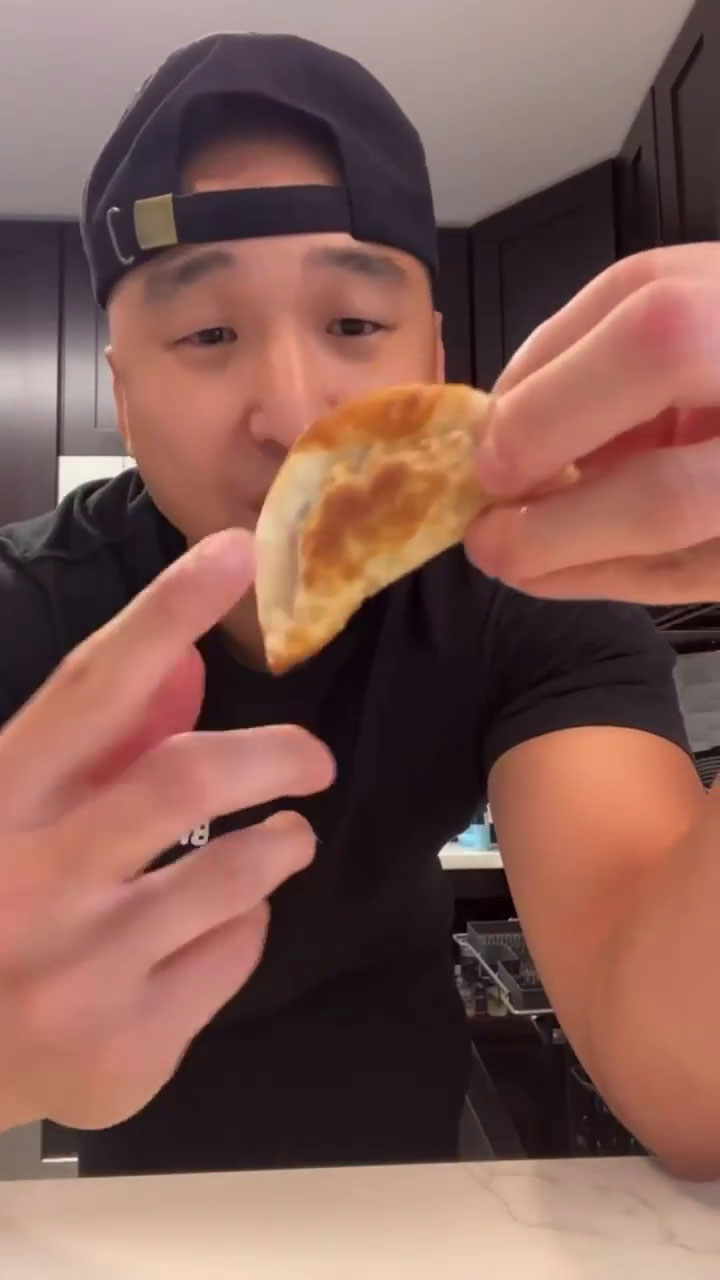
Korean dumplings or Mandu are filled with the perfect ratio of meat and vegetables. Contrary to what most people think, it is easy, customizable, and even fun to make especially when you are with family.
Dumplings are probably one of the most common food across cultures because of their variations. There’s Gyoza in Japan, Xiao Long Bao or Wanton in China, Spring Rolls in Southeast Asia, Ravioli or Pierogi in the West, and surely there are so many more.
The essence of a dumpling is that it is filled with protein and vegetables, seasoned, and rolled into pastry sheets. These little pockets are perfect to be prepared in advance and served in different ways. Whether you like it in soup or as finger food, it’s got you covered especially when you have a big batch ready in the freezer.
Mandu Filling
Disclaimer: I get a small commission at no additional cost to you when you make a qualified purchase under the affiliate links.
For this mandu recipe, I used scallions, chives, mung bean sprouts, onions, cabbage, and tofu. While these veggies are my preference, you can also use zucchini, kimchi, dangmyeon or sweet potato glass noodles, etc.
The vegetables can easily be swapped or adjusted according to your preference just make sure that it is a 1:1 ratio between the meat and all the vegetables combined. That said, if you want to skip the tofu, you definitely can. I gotchu fam!!
Season the filling with garlic, ginger, soy sauce, sesame oil, sugar, and pepper. These are a balance of different flavors for maximum taste in your dumplings.
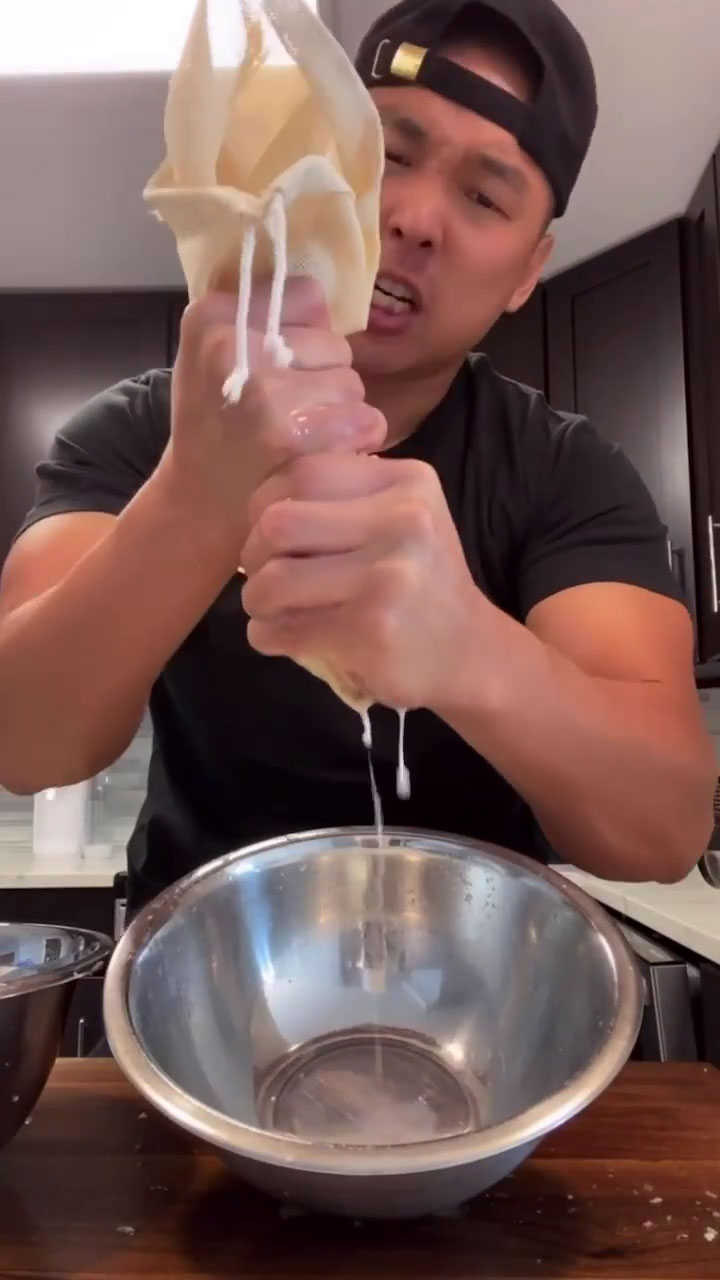
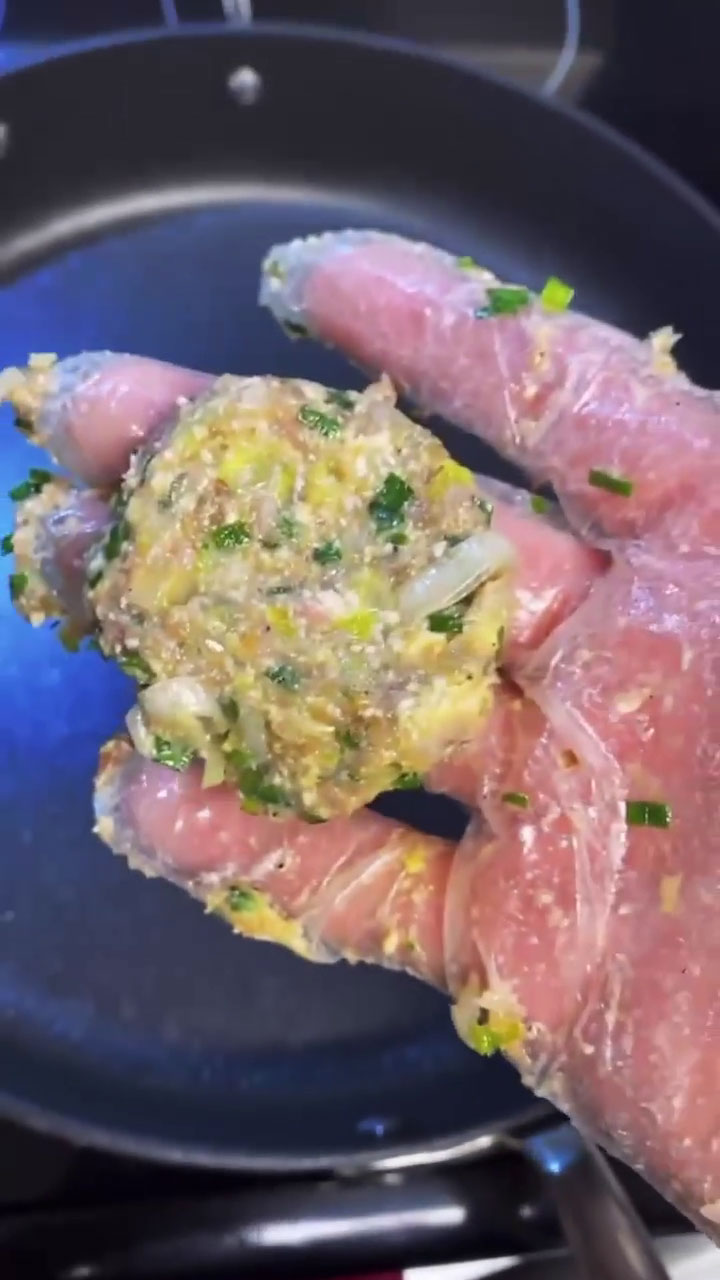
Tip #1: Blanche your vegetables. Blanching the vegetables will cook and soften them, which in turn reduces cook time for the dumplings and will help with mincing everything as fine as you can.
Tip #2: Chop your vegetables finely. You have to chop all the ingredients so finely that you won’t even notice that it is there. This technique will help with both the texture and the taste, blending it up perfectly without having to chew big pieces of the vegetables. A sharp knife is your best friend for this!
Tip #3: Squeeze that jawn uuuup! In using different vegetables, make sure to salt and draw as much water out from watery vegetables like beansprouts, onion, cabbage, and tofu. Removing the water content will help make the mandu intact after cooking. You can use a cheesecloth for this step!
Tip #4: Test the filling. After mixing the fillings thoroughly, make sure to taste them before wrapping them. To test, fry a small ball, taste it, and adjust accordingly. It’s okay if it is on the slightly saltier side because the dumpling skin will balance it out.
Other Frequently Asked Questions:
Why not cook the meat?
For the meat, you have to keep it raw so it will render and make the dumpling juicy once you cook it.
What kind of meat can I use? Can I skip the meat?
You can use pork, beef, a mix of both, or shrimp for the protein! But you can also skip them altogether and use mushrooms in place to make vegetable dumplings.
Where can I buy dumpling skin?
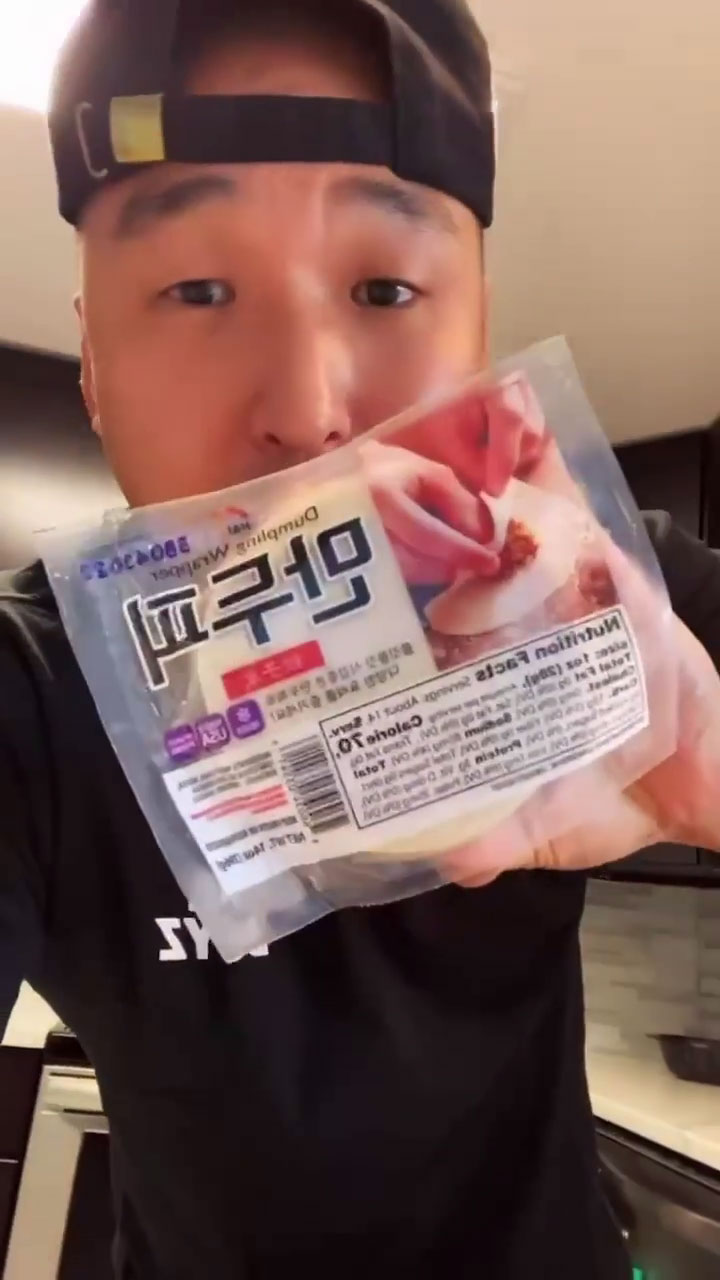
While it is okay to make your own dumpling skin, using store-bought ones is perfectly fine. This will even reduce your cooking time. Dumpling skins are available in the cold storage section of Hmart or Asian groceries.
How do you wrap dumplings?
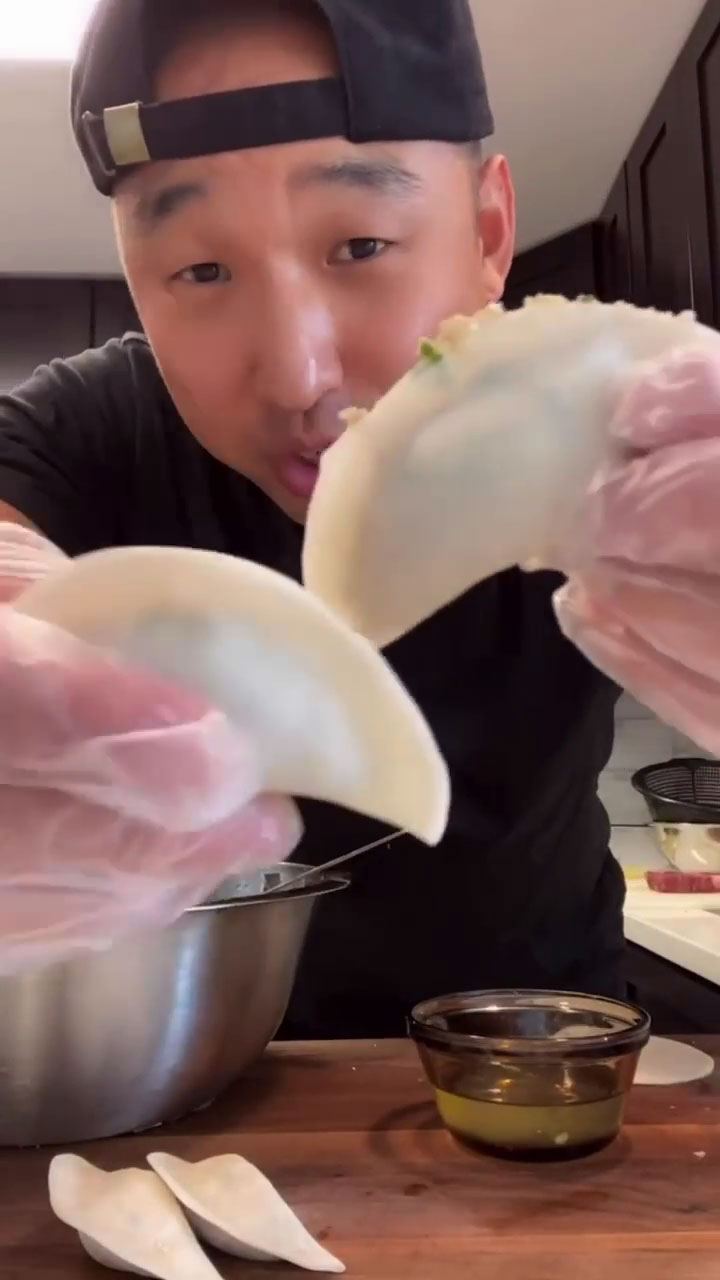
The most basic wrap is half moon shape, and honestly, that’s all good for me! Make sure to use only 1 tablespoon of filling per dumpling and DO NOT overfill it. Brush egg whites on half of the circle of the dumpling skin, fold, then close. Make sure there is no air left in the center, and the ends are locked tightly.
Let this be a therapeutic time with family while making them. Just like how we used to do it, aunties would gossip or the kids would hold a mandu competition. It’s what we often do especially during Chuseok~ Kakaka~
How do you freeze dumplings?
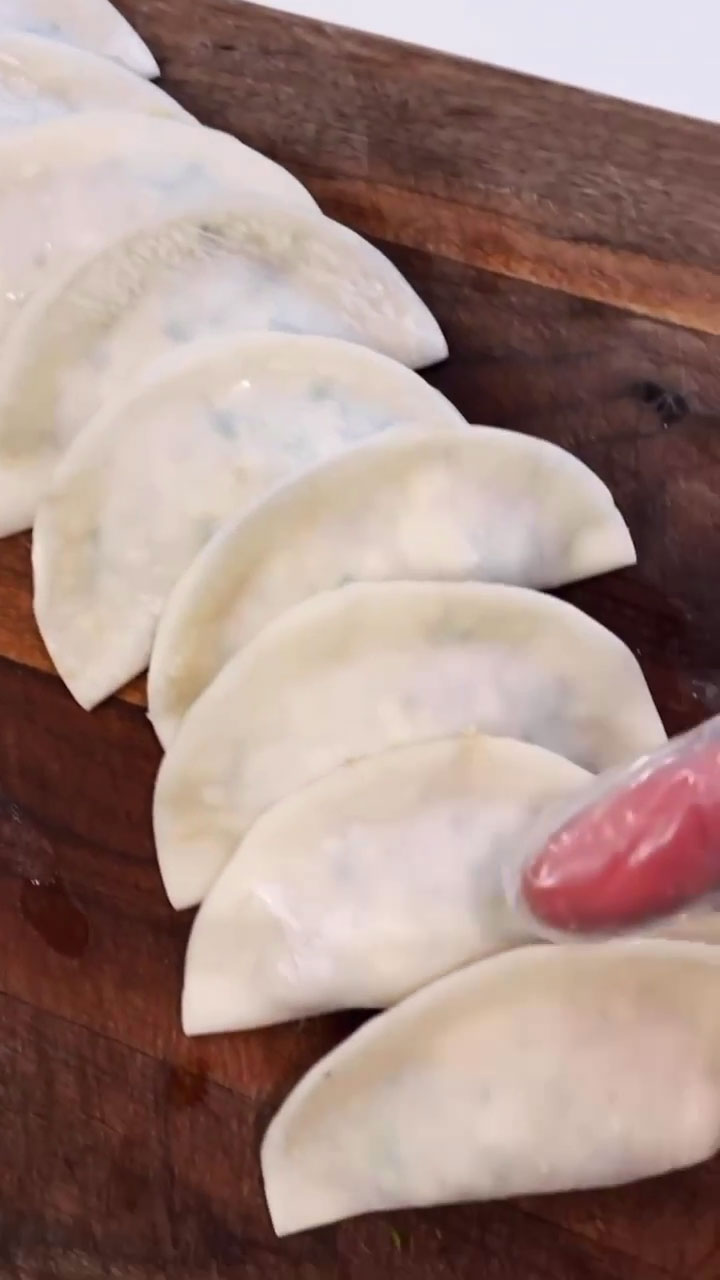
When you are wrapping these Korean dumplings, place them on a lined baking sheet with even spaces in between.
Freeze them on the baking sheet for an hour or until the skins have dried out and are not sticking to each other anymore. Transfer to freezer bags and cook as needed. It should be good for 2-3 months. When cooking frozen dumplings, there is no need to thaw. It can be cooked right out of the freezer.
Cooking and Serving Mandu
Steamed Dumplings
To steam, line steamers with parchment paper, then brush lightly with oil so the dumplings don’t stick. Place the dumplings spaced evenly and steam for 8-10 minutes.
Fried Dumplings
To fry, there are many options. You can shallow fry them in 2-3 tablespoons of oil in a frying pan. Let sit for 3-4 minutes on each side until they’re golden brown. You can deep fry them on medium heat until they are golden brown. And you can also air fry them at 350F for 12 minutes, flipping halfway through.
Mandu Dipping Sauce
For the sauce, you can use the sauce recipe in this Soy-Marinated Onions or Pan Fried Eggplant. You can also try out this General Cho Dumpling and Dumpling Fried Rice.
Other classic recipes you might like:
Make sure to leave a rating, a comment, or tag me on Facebook, Instagram, or Tiktok when you chop them up! Yeobosayo!
Korean Dumplings (Mandu)
Equipment
- Cheese Cloth
- Baking Sheet
- Freezer Bags
Ingredients
- Dumpling Skins
- Egg Yolk
- Vegetable or Canola Oil For cooking
Dumpling Filling
- 100 grams Scallions Finely chopped
- 100 grams Chives Finely chopped
- 150 grams Mung Bean Sprouts Blanched and finely chopped
- 200 grams Onion Blanched and finely chopped
- 150 grams Cabbage Blanched and finely chopped
- 200 grams Firm Tofu Blanched and finely chopped
- 470 grams Ground Beef
- 1 tsp Salt To draw own water
- 1 tbsp Flour
- 2 pcs Egg Yolks
Dumpling Seasoning
- 1/2 tsp Pepper
- 20 grams Soy Sauce
- 20 grams Sesame Oil
- 5 grams Sugar
- 30 grams Garlic
- 7 grams Ginger
Instructions
- Chop scallion and chives finely, set aside.
- Blanche mungbean sprouts, onion, cabbage, and chop finely. Salt and let sit for 2 minutes, then place in a cheese cloth and squeeze all the water out. Mix with the scallion and chives.
- Blanche tofu, place in a cheese cloth and squeeze, then crumble. Mix with the other vegetables.
- To the vegetables, add ground beef, flour, egg yolks, and the seasonings. Mix thoroughly.
- Grab a small piece of the filling and pan fry to taste. Adjust with salt and pepper as needed.
- When the filling is ready to go, get 1 tablespoon of the filling and place in the center of the dumpling skin. Brush edges with egg yolk to close the dumpling, making sure there is no air in the center and edges are closed tightly.
- In a lined baking sheet, place the dumplings with even spaces and freeze for an hour until skins have dried out and are ready to be transferred in zipper bags. Store for 2-3 months.
- You can also cook it right away by steaming or frying.
- To steam: Line steamers with parchment paper that has been lightly brushed with oil. Steam for 8-10 minutes. Serve with dipping sauce.
- To fry: In frying pan with 2-3 tablespoons of oil, let sit for 3-4 minutes per side until golden brown. Or deep fry until golden brown. Serve with dipping sauce.
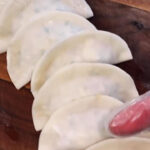
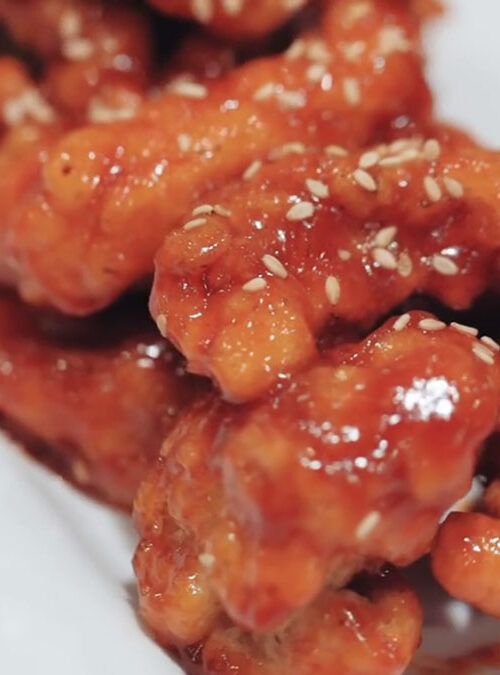
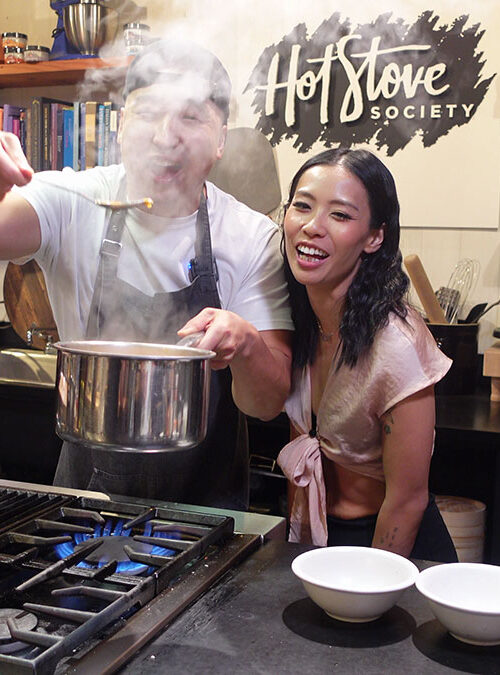



Your recipe is pretty much like the one I learned from my Caucasian mom who learned it from my Korean grandmother. The most important part of the recipe is blanching the veggies and using every bit iPod strength to squeeze out the liquid.
I get upset when I order mandu soup and the mandu falls apart. That kind of mandu is nothing more than Gyoza which usually lacks flavor and falls apart.
isn’t mandu super easy to make? Yeah I agree that i hate when the mandu’s fall apart. try to get the thicker mandu pi’s.
Hello Chef
Love watching your videos and making new and different foods, I wanted to know can you bake the dumplings and get the same results.thank you
you can put it in an air fryer but it won’t be as tasty!
Can you deep fry these? How can you make sure the meat is cooked? Like how long on each side? And if you pan fry right from the freezer, how long would you fry on each side? What temperture do you want the pan set on, high, med high, medium, low?
you can deep fry if you want. We usually pan-fry, steam, or boil. If you pan fry on each side, I would say medium heat for about 3 minutes just to get it a golden brown color
I don’t like a fishy taste but many asian food call for oyster sauce. Does it taste fishy. One time was at a Asian mall and ordered some rice. when I sat down at the table there was some dark sauce sitting there. I thought it was soy sauce, which I like. Put it all over my rice and like to have a cow. It was fish sauce………Do people really like to put fish sauce on their food like we put soy sauce on our rice? I mean, it tasted like something dead.
hahaha fish sauce is really strong and adds flavor. We don’t usually put it all over for the “fishy” taste. just little bits in soup to enhance flavor
Hi Chris! I LOVE LOVE LOVE this recipe and have already made it 3 times at least in the past couple weeks! Ha! I could have sworn I saw the recipe though for the dipping sauce as well before, am I imagining things? I know it had soy sauce, sesame oil, green onions and sugar in it…maybe some rice vinegar also and green onions….does that sound right? Thanks so much! Love your vids!
Hi Barbie! So glad you love the recipe!! Dipping sauce is linked in the article~~
Hey Chris, love your recipes I’ve actually been fusing them with other flavors, making it my own. Wanted to know do you always have to put tofu when making Mandu? Thank you love your videos with you and your family.
Thank you so much! I always love hearing when people add their twist to the recipes so they can enjoy it more~ As for Mandu, the tofu is there as an extender to the meat and it also soaks in/hold the flavor of the seasoning, nevertheless, you can opt it out of you don’t like it.